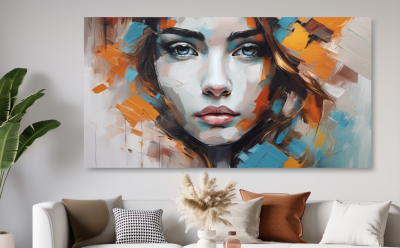Painting, a revered and ancient form of art, has captured the abstracte schilderijen human spirit for thousands of years. From the intricate cave paintings of Lascaux to contemporary abstract works, painting transcends time and culture, offering a unique window into the artist’s soul and the world around them. This article explores the rich tapestry of painting, examining its history, techniques, and its enduring impact on society.
The Origins of Painting
The earliest known paintings date back to the Upper Paleolithic period, around 40,000 years ago. These early works, found in caves such as those in Lascaux and Altamira, are remarkable for their use of color and form. Primitive humans used natural pigments and simple tools to create images of animals, hunting scenes, and abstract symbols. These paintings are more than mere decoration; they serve as a testament to early humans’ desire to communicate, record their experiences, and perhaps even exert control over their environment.
The Evolution of Techniques
As societies evolved, so did painting techniques. In Ancient Egypt, painting was closely tied to religion and ritual, with vibrant colors and meticulous lines used to depict gods, pharaohs, and daily life. The use of tempera—pigments mixed with a water-soluble binder—was prevalent, leading to the creation of elaborate frescoes and wall art.
The Renaissance era marked a pivotal moment in painting, characterized by advancements in technique and perspective. Artists like Leonardo da Vinci, Michelangelo, and Raphael pushed the boundaries of realism and anatomical accuracy, employing techniques such as sfumato (the blending of colors and tones) and chiaroscuro (the use of strong contrasts between light and dark). This period celebrated humanism and the exploration of both physical and emotional landscapes.
In the 19th and early 20th centuries, movements like Impressionism, Post-Impressionism, and Cubism emerged, each challenging traditional notions of art. Impressionists like Claude Monet captured fleeting moments and the effects of light, while Post-Impressionists like Vincent van Gogh and Paul Cézanne explored bold colors and geometric forms. Cubism, pioneered by Pablo Picasso and Georges Braque, deconstructed objects into abstract forms, offering new ways to represent reality.
Modern and Contemporary Innovations
Today, painting continues to evolve, incorporating diverse media and techniques. Modern artists experiment with materials such as acrylics, mixed media, and digital tools, pushing the boundaries of what painting can be. The rise of street art and graffiti has also brought new perspectives to the art form, often addressing social and political issues in vibrant and provocative ways.
Contemporary painting embraces a wide range of styles and approaches. Abstract expressionism, with its emphasis on spontaneous and emotional expression, contrasts sharply with the meticulous precision of hyperrealism. Artists now draw on global influences, blending traditional techniques with innovative practices to create works that resonate on a personal and universal level.
The Impact of Painting
Painting is not just a visual experience; it is a powerful medium for conveying ideas, emotions, and cultural narratives. Throughout history, paintings have been used to document significant events, challenge societal norms, and explore the human condition. Whether through the grandeur of historical portraits or the intimacy of personal expression, painting continues to be a vital part of our cultural heritage.
Moreover, the act of painting itself can be a profound experience. For many artists, it is a form of meditation, a way to explore their inner world and connect with something greater than themselves. For viewers, a painting can evoke memories, stir emotions, and offer new perspectives.
Conclusion
Painting, in all its forms and variations, remains a testament to human creativity and expression. From ancient cave art to contemporary masterpieces, it bridges past and present, offering insights into our shared history and individual experiences. As we move forward, the art of painting will undoubtedly continue to inspire, challenge, and captivate, ensuring its place as one of humanity’s most enduring and cherished forms of artistic expression.




